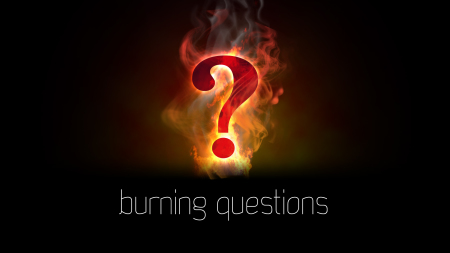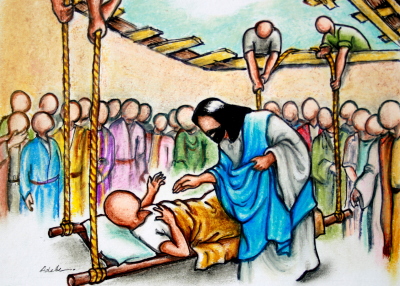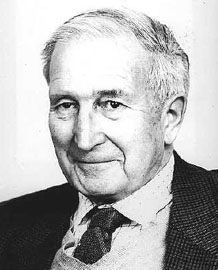is the new testament reliable?
I. The Denial of Miracles
Are the New Testament Gospel Documents Reliable?
The New Testament Gospel documents provide a record of the most incredible of all stories, the story of Jesus Christ. These documents have been read, studied, researched and scrutinized like no other narrative in all of human history. The New Testament has certainly encountered unbelief, skepticism and resistance and this response will continue for various reasons, many of which we will examine here.
However, the single greatest reason for the opposition, skepticism, criticism and cynicism is because of the central main subject of the New Testament and that is the Person of Jesus Christ. People can talk about God, spiritual matters, politics, history… and usually at the end of the day find some kind of common ground. But the Jesus Christ that is presented in the New Testament brings a sword, He divides. We either side for Him or against Him with no neutral or middle response.
The Gospel message of Jesus Christ and the preaching of the cross bring an offense to many people. I don’t state this lightly, but I believe that this has proven itself to be true time and time again. The general view among the secular media and educational institutions is that the New Testament documents are not reliable history, but rather they are the end result of second century Christian church theology.
Accordingly, Jesus Christ is largely an invention and the miracles of Christ are exaggerated events built on legend rather than fact. As examples, the typical encyclopedia that is available for prospective Bible information suggests that the New Testament and the Gospels are tradition-based that have no significant historical value.“The character and structure of the individual traditions are incorporated into the Gospels, which definitely do not have a historical or biographical interest in facts, circumstances and the course of events. They do not reproduce the story of Jesus as such, but instead recount history interpreted from the viewpoint of the Christian faith.
What Jesus says, does, and suffers is interpreted as the fulfillment of the Old Testament promises and his story is slanted toward his end (the Passion and the Resurrection), his significance as the divine Savior, and his Second Coming. In other words, the Gospel texts do not intend to describe the Jesus of the past but rather to proclaim who he is for all ages of time.
These perspectives of the post-Easter church to which the writers belong and for which their reports are intended must continually be taken into consideration.” – The Encyclopedia Britannica: CD 2.02 (Jesus: The Christ and Christology)“While the four Gospels obviously tell the same story, their interpretations of it clearly differ and many important contradictions may be noted among them.” – The Encyclopedia Americana, International Edition, Vol. 16, page 40, 1999.“The Gospels are not biographies and make no distinction between the events they narrate and the interpretation those events are thought to bear. But they are the basis for modern attempts to reconstruct the Jesus of history.” – The Encyclopedia Americana International Edition, Vol. 16, page 38, 1999.
These Encyclopedia sources give very clear examples of what is supposed by many people in the educational community regarding the historicity of the New Testament Gospel accounts. What is the basis of this understanding? What are the factors that contribute to these views regarding the Gospel? How do we examine and see if the New Testament documents, and the Gospels in particular, are reliable? How do we determine if what they affirm is true? Are these narratives simply legends, myths, forgeries, exaggerations or are they factual history? Is it even possible to come to a conclusion regarding the record of the New Testament? Where do we start? (See note #6.)

Where do we Start?
When we examine the record of the Gospel , we have an excellent basis for asserting the credibility and the veracity of the message. But for some this is not enough, they want provability. In the case of historical events, this type of confirmation is not possible. We can only deal with levels of probability not provability. However, everything in life is based on probability not 100% certainty.
So where do we start in an investigation into the facts of the Gospel and the resurrection of Christ? Simon Greenleaf (1783-1853), the former Royal Professor of Law at Harvard University is considered by many to be the greatest legal expert on the laws of evidence that has ever lived. The one unchanging and abiding principle that he taught his law students was to“never make up your mind about any significant matter without first considering all the evidence”.
This approach should be employed as we examine the issue of the Gospel and the resurrection of Christ. To discover what is true and factual, we must use all of the principles of logic, physical, historical and science based evidences that are available to us. The two basic rules of logic that this examination is based on are the laws of non-contradiction and the excluded middle. These two primary, self-evident laws of logic are called first principles. These principles are not something that we learn or are instructed in but rather we simply know them intuitively and we use them every day in the normal course of life.
When investigating any question of fact, including the question of the resurrection of Christ and the factual nature of the Gospel, these laws of logic must apply.The law of non-contradiction is a self- evident first principle that simply says that contradictory statements cannot both be true and false at the same time and in the same sense. A principle or affirmation of a fact cannot be both true and false. Testimony in our court systems, business transactions and general communication on a personal level of any factual matter is based on this law of non-contradiction.The law of the excluded middle simply states that something either is or is not. There is no middle ground or third alternative.
For example, either Jesus rose from the dead or he did not rise from the dead. Either one or the other is true but not both. There is no third or middle option.Based on these first principles, we establish a logical argument that must correspond with reality and if the premise of our argument is true it follows that the conclusion will be true.The next area in our examination is to answer the question, “can our reasoning process based on these laws of logic and evidence be trusted to provide us with any degree of certainty”?
The answer to this question is yes but not with 100% certainty. Can we know for example that Jesus rose from the dead? Well, if by “ knowing” we mean 100% absolute assurance then the answer is no. If we mean can we prove that Jesus rose from the dead with moral certainty, then the answer is yes. But we must remember that this proof does not mean that people will accept the evidence regardless of how good it may be.
This type of proof is not a perfect or absolute certain proof, but rather it is a level or standard of proof that can lead to certainty beyond a reasonable doubt. This standard of moral certainty is what our judicial system has historically based its decisions on. A judge or jury makes their decisions on high probability not 100 % certainty. If judicial decisions had to be rendered only where 100 % certainty was determined, no court room decisions would ever be reached.
What about Faith?
All of us are people of faith. We make decisions everyday based on probability not 100 % certainty and we make these decisions and choices based on a certain level of certainty and the remainder on faith. As limited, finite human beings, we do not have the capacity or the capability to acquire or possess the type of knowledge that can provide us with 100 % certainty on any matter of fact. We must always exercise some level or degree of faith. (See note #1).For example, the simple task of sitting into a comfortable chair. We examine the chair by sight, we consider where the chair is located and we might even test it by pushing against it to see if it is mechanically and structurally sound and then based on our observations we choose to sit down. Are we 100 % certain that it will support us securely? – no. We may be 99 % certain but there will still be a requirement of 1 % faith. Based on this high level of probability we choose to place ourselves into the chair.
We must employ this same willingness to examine the evidence for the truth of the Gospel and then exercise faith based on the high probability that this evidence provides.There are people who desire absolute, 100 % certainty prior to believing in the Gospel and the resurrection of Christ. Yet they do not apply this high level of certainty in other matters of significance. It should be noted that the atheist (denies that God exists) and the agnostic (doubts that God exists) must also exercise faith in atheism or agnosticism.
I would argue that it takes far more faith to believe that complicated life forms evolved through a natural selection process and from the random interaction of molecules which came into existence through random chance, than to believe in a Creator (God) and that this God has stepped into human history in the Person of Jesus Christ. The point is that both the Christian and the atheist / agnostic must exercise and employ faith. So from the theist position, can we prove the truth of the Gospel and the resurrection with 100 % certainty ? – no. With reasonable moral certainty?
– yes, if we are willing to weigh and evaluate the evidence and follow where it leads us. We must recognize that when we step outside of the knowledge of our own limited experience, we have moved into the area of probabilities. This requires us to evaluate the evidence and do the hard work of examining what we believe and why we believe and then exercise faith based on the evidence for our beliefs.Next, we have to be willing, as much as is humanly possible, to put aside our personal presuppositions and use an evidence based approach, apply sound investigative procedures and put the New Testament documents to a test. This I will attempt to do this as best as I can in this limited presentation. However, I must state that as a Christian I have definitely parked myself in the camp as a believer in the trustworthy nature of the New Testament. On the basis of a reliable New Testament, I believe that it provides us with a written record of the life, death, resurrection and ministry of the Son of God, Jesus Christ.

I have arrived at this point with time spent reading, researching and in examining numerous viewpoints. My experience has taught me that if one is not open and willing to believe the Gospel and the presentation of the New Testament, then no amount of evidence will convince. Truth does not of itself have the power or ability to force people’s compliance and acceptance. We can still dispute, deny and reject truth. I understand that this same argument can be applied in many different circumstances to all of us.
But this is an examination into the veracity and reliability of the New Testament and it applies here now. I also understand that the New Testament deals with realities that go beyond our understanding. Why the cross? Why the resurrection of Christ? How does Jesus’ death on the cross deal with sin? Although the Gospel presents the claims of Christ based on reason and logic, there are realities that are a mystery. However, if we examine the New Testament documents in areas that we can test and they are found to be trustworthy, then the information that may go beyond our ability to verify or understand, now has a credible basis upon which to trust the rest of the New Testament.
There are four areas of difficulties that people have with regard to the New Testament and the Bible in general.
I. The Denial of Miracles:
First, people struggle with the miracles that are in recorded in numerous New Testament narratives. If a person does not believe that miracles can occur, then any document that records these events will be suspect and ultimately rejected.
II. The Alleged Inconsistencies of the Testimony of the Gospel Accounts:
Second, readers of the four Gospels, and to a lesser extend other books of the New Testament, find what appears to be inconsistencies or contradictions in the accounts of the same events recorded by various writers. This leads them to doubt the veracity of these records.
III. The Difficulty of Trusting Ancient History:
Third, there are those who believe that any document that is dealing with information that is centuries old, suffers from the high probability of corruption and tampering.
IV. The Exclusive Nature of the Gospel and the Claims of Christ:
Fourth, when people who consider themselves open-minded and fair, see the absolute and exclusive claims of Christ, there is an offense and a sense of an elitist agenda that sets up a resistance to the message of the Gospel.
The Denial of Miracles:

“Miracles are not possible. Any historical account that records alleged miraculous events as factual is a legend based narrative, because we know that miracles do not happen”.
This objection affirms that because the New Testament contains miracles, it cannot be historically accurate because miracles have never happened. For the sake of this examination, we must do our best to set aside our presuppositions. What does this mean? As a Christian, I must not presuppose that miracles do take place; I do not presuppose that the New Testament is inspired by God or that Jesus rose from the dead.The non-believer must also not presuppose that miracles cannot take place, or that it is impossible that Jesus could have been raised from the dead.
We must all agree to look at the evidence using reason and logic and apply sound, proven, empirical means to attempt to arrive at a high probability that certain events (such as the resurrection of Christ or the miracle of the creation of the universe) literally have or have not taken place.Why do we need to the set aside these presuppositions? If we lock ourselves into a pre-supposed position, we limit our ability to examine and discover truth.
This is not easy, because we are by nature inclined to our views and we may hold to them with genuine tenacity. But for the sake of this examination, we need to at least keep our minds open. The old saying “Don’t confuse me with the facts, my mind is made up” needs to be rejected.Many people are highly skeptical of the miraculous. I would agree that being skeptical of miracles is natural for all of us and in most circumstances a wise approach. We should not assume that an event is a miraculous happening just because it may be difficult to explain.
If it is possible that there is a natural explanation for a particular event, then we should always look for a naturalistic cause first. However, if we live in a universe where God does exist, then the possibility of the miraculous is present. Even the most hardened atheist cannot assume that he knows with 100% certainty that there is no God and he must leave the door somewhat open for God’s existence.
If the universe is a closed, totally naturalistic system (no God, no supernatural), then of course there can be no supernatural events. But if the universe is an open system or an open box with a God who has caused it to exist, then we cannot assume that He will not choose to step into this box that He has created and intervene with a supernatural event.The anti-miraculous argument goes something like this:
1. God does not exist, therefore supernatural events are not possible.
2. The Gospel affirms supernatural events, therefore the Gospel is false.
3. The Gospel affirms that God exists, therefore God does not exist.The premise of the argument is assumed in the conclusion. This argument is an example of circular reasoning or beginning with (God does not exist) what we are intending to end with (God does not exist).
Many of the alleged “miracles” in Greek and Roman mythology are described as bizarre and grotesque. These are “miracles” that certainly are not to be trusted or accepted as valid. In contrast to this, the Biblical miracles are provided in settings of time and space with natural historical narratives surrounding the supernatural events. They are either initiated out of love and mercy for the needs of people or they are attached to a person or to God Himself as a sign of authority or validity.
All of the Biblical miracles are displayed for a purpose, not just random senseless acts. Just because many recorded “miracles” are invalid and not to be believed does not mean that all alleged miracles are invalid. The key is to examine and investigate the supernatural acts in question to determine if in fact they did occur. Biblical miracles are powerful events that are successful in the purpose for which they are performed. They are permanent and immediate in their results and they glorify God and His goodness.
There are some events that may be unusual and above the ordinary that are not miraculous. God may choose to answer prayer and assist nature or human knowledge such as in the application of the science of medicine. God may providentially work within the constraints of nature and use human circumstances to work out His will. The Bible also affirms that some non-natural actions may be derived from satanic power. However, Biblical miracles are in a class of their own.
What is a Miracle?
A miracle is by definition a special act of God, one that on a temporary basis, suspends the natural laws for the exercise of a God derived purpose. Many people argue that miracles cannot take place because they are contrary to science. However, miracles are by definition not natural but are outside of nature; they are supernatural. Science deals with natural events only, therefore science has nothing to affirm about miracles. Many scientists may be atheists and deny the miraculous ,but they cannot defend this position on the basis of science because this is a philosophical exercise, not a scientific one. Miracles can only exist where God exists.
If God is able to create and sustain the entire universe, which is the greatest of all miracles, then He is certainly able to act in this universe that He has created. So for both the theist and the atheist, we should not presuppose with 100% certainty that God does or does not exist, but we must leave open the possibility that He could exist and that He could choose to respond with supernatural acts. We then must examine with an open mind the individual evidences for the miracle event under consideration. Based on this examination, we follow where the evidence leads us.

There have been various philosophers who have claimed that the miraculous is impossible. Benedict Spinoza (1632-1677), was a Jewish pantheist (a pantheist is one who believes that God and nature are one) and his assertion was –“If anyone asserted that God acts in contravention to the laws of nature, he, would be compelled to assert that God acted against His own nature – an evident absurdity” – A Theologico-Political Treatise – Benedict Spinoza, pages 82,83.
Spinoza’s world view was pantheistic and for Spinoza, nature and God are one and the same “God is all and all is God”, it then follows that the laws of nature are a quality of God and are unchanging and any violation of those laws (a supernatural act) would be a violation of God’s very nature. This would be an absurdity. However, Spinoza presupposed that God and nature are one and based on his anti-supernatural presupposition, he concluded that miracles do not occur. Spinoza rejected the notion that God is personal and separate from His creation but instead affirmed that “God is everything and everything is God.”Spinoza did not provide evidence or empirical data (knowledge acquired by observation or experimentation) for his presupposition, but rather just declared it as a matter of fact that God and nature are one.
He ended up with the conclusion that he presupposed in his premise. This is not sound logic. He based his argument by begging the question and circular reasoning; he assumed the conclusion. His conclusion is contained in his premise and this is a basic fallacy in any argument. This is absolutely not helpful in the investigation of whether miracles occur or not.The primary source for the anti-supernatural objections that many people hold to comes from the brilliant Scottish philosopher, David Hume (1711-1776). Hume objected to the possibility of miracles and affirmed that any naturalistic explanation for a particular event or action, regardless of how unlikely, is better than a miraculous explanation. His argument against miracles is as follows:
1. Natural law is by definition that which is of a regular occurrence.
2. A supernatural event (miracle) is by definition a rare occurrence.
3. The evidence for the regular occurrences is much greater than the evidence for the rare occurrence.
4. A wise philosopher will base his beliefs on the greater evidence. Since supernatural events are rare, a wise philosopher will never believe in them.On the surface this appears to be sound logic.
However, when one examines this closely, the premise #3 is not always true. History itself is filled with rare occurrences that happen only once, yet we know them to be true. Each person’s birth has happened only once, but we certainly don’t deny these realities. The origin of the universe and life itself happened only once; they were rare and unrepeatable events, yet we believe and know that these are realities. Hume also leaves open another weakness in his argument. Instead of weighing each alleged supernatural event based on its quality of evidence, he rules out belief in advance. He simply affirms that by adding all of the regular occurrences together he comes up with uniform experience against the rare events.
C.S. Lewis responded to Hume’s argument-
“Now of course we must agree with Hume that if there is absolutely “uniform experience” against miracles, if in other words they have never happened, why then they never have. Unfortunately we know the experience against them to be uniform only if we know that all the reports of them are false. And we can know all the reports to be false only if we know already that miracles have never occurred. In fact, we are arguing in a circle.” – Miracles – C.S. Lewis , page 105.
The fact that miracles are rare (this is true) does not mean that they cannot or have not occurred. Like Spinoza, Hume hides the conclusion of his argument in his premise. He presupposes that all human experiences are contrary to the miraculous. But he cannot know this unless he investigates the evidence for each miracle and determines each of them to be false. He assumes that miracles are false because they are rare. It must be remembered that miracles by their very nature are rare and that is what distinguishes them from natural occurrences.Some suppose that the Bible is filled on every page with miracles. While it is absolutely true that the Bible is a book based in the miraculous, these events are limited. For instance, the greatest miracle recorded in the Bible is found in Genesis 1:1. “In the beginning, God created the heavens and the earth”. This may very well be the most offensive verse in the entire Bible, for it affirms that God created everything that exists.
However, if one examines the Bible as a whole, what follows from Genesis 1:1 is limited.There are approximately (250) miracles in the entire Bible; (37) miracles are recorded in the four Gospel accounts; (18) miracles are recorded in the book of Acts with another (12) alluded to. There are also at least (11) separate instances in the Gospel narratives that indicate that Jesus performed many miracles among crowds of people of which the particulars of these events were not recorded. For example in Luke’s Gospel – Luke 4:40; 5:25; 6:17-19; 9:10,11 each of these passages indicate separate instances where Jesus performed miracles among “multitudes” of people and the specifics of these miraculous events are not mentioned.
The Biblical miracles are also consolidated into five separate periods of time:

1. Creation
2. Moses and Joshua
3. The period of the Judges
4. The prophets Elijah and Elisha
5. Jesus Christ and His apostlesThere are numerous times in Biblical history where miracles were either non-existent or rare. It would not be correct to assume that the Bible records miracles as a common occurrence.
The point here is that in the case of the New Testament in particular, the sense of exaggeration of the accounts of miracles is not conveyed. The realities of cities, geographical sites, customs, dates, artifacts…. are mentioned with care and consideration along with other matters of fact. The writers of the New Testament narratives discuss normal everyday occurrences and miraculous events together in a very straightforward and seamless manner.The naturalistic historian states that we can only examine historical events based on explanations for those events that are confined to the non supernatural . This essentially means that we have accepted the approach to history from an atheistic only level. The problem with this is that we have now limited ourselves to a self-imposed restriction that cannot account for many parts of history. If we lived in a closed natural universe, then obviously, we would have to approach history this way.
But if we can make the case that God does or could exist, then we have to consider that certain events may be interventions wherein God is acting in the affairs of men.As I mentioned earlier, we should look first for naturalistic causes for events, but if these causes cannot account for the evidence of history that we are looking at, then we open the door to a supernatural cause when the evidence warrants it.For instance, what is the best explanation for the resurrection of Christ? Given the information of the New Testament, Jesus predicted and defined His death and resurrection and then based on eyewitness narratives, rose from the dead. We either must reject the narratives of the Gospel and reduce them down to a place that only accommodates our non-supernatural view of history or we are forced into complete absurdities in order to account for this event. If we limit ourselves to a naturalistic only explanation for the resurrection of Jesus, this is what we are left with. So who sets the rules? Do the naturalistic only historians? If we want to find out what has really happened in history, we have to open the box and let God set the rules.
 |
As we examine the reliability of the New Testament documents, we cannot simply deny the narratives because they record supernatural events. Instead, we need to weigh the evidence and see if these events actually took place. This requires that we be willing to lay aside our presuppositions and weigh the evidence for or against the New Testament with an open mind.Antony Flew, a highly respected former atheistic philosopher, who (2004) became a theist stated regarding the miracle of the resurrection of Christ –“The evidence for the resurrection is better than for claimed miracles in any other religion. It’s outstandingly different in quality and quantity, I think, from the evidence offered for the occurrence of most other supposedly miraculous events.” – Antony Flew and Gary R. Habermas, “My Pilgrimage from Atheism to Theism: An Exclusive Interview with Former British Atheist Professor Antony Flew: page 13, Dec. 4, 2004.
This is the approach that we should employ with any and all reported miracles – examine the evidence for and against, instead of simply ignoring or refusing to consider. This is the method that is presented in the New Testament in regard to the resurrection of Christ and in the recorded miracles. The appeal by Jesus and His apostles to eyewitness testimony, common public knowledge and investigation is demonstrated in the Gospels and the book of Acts.